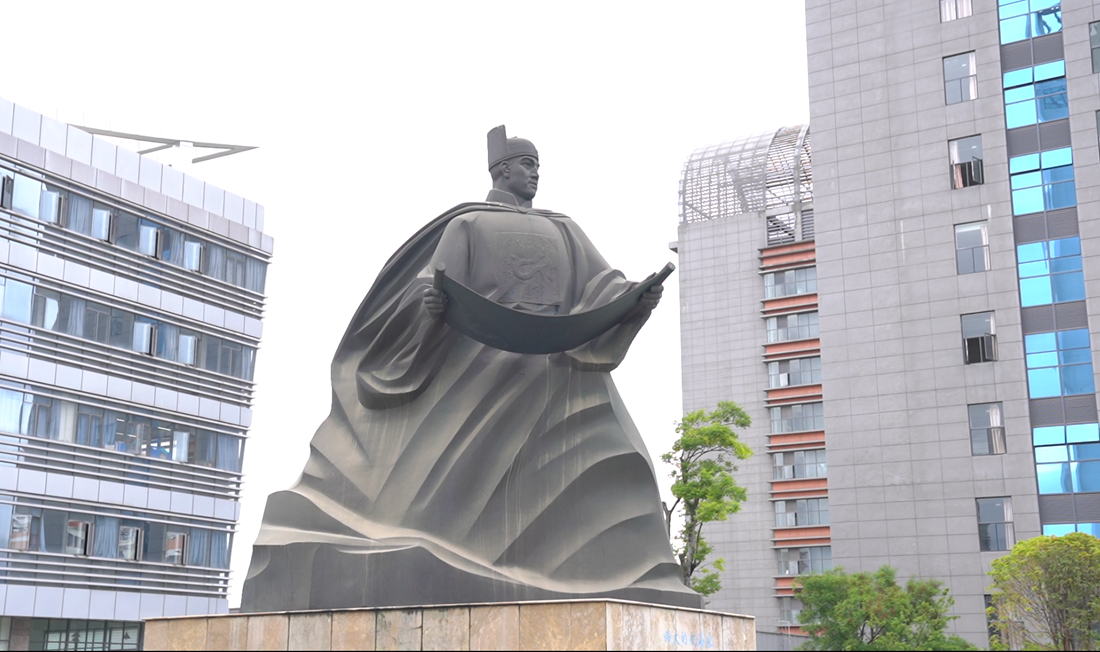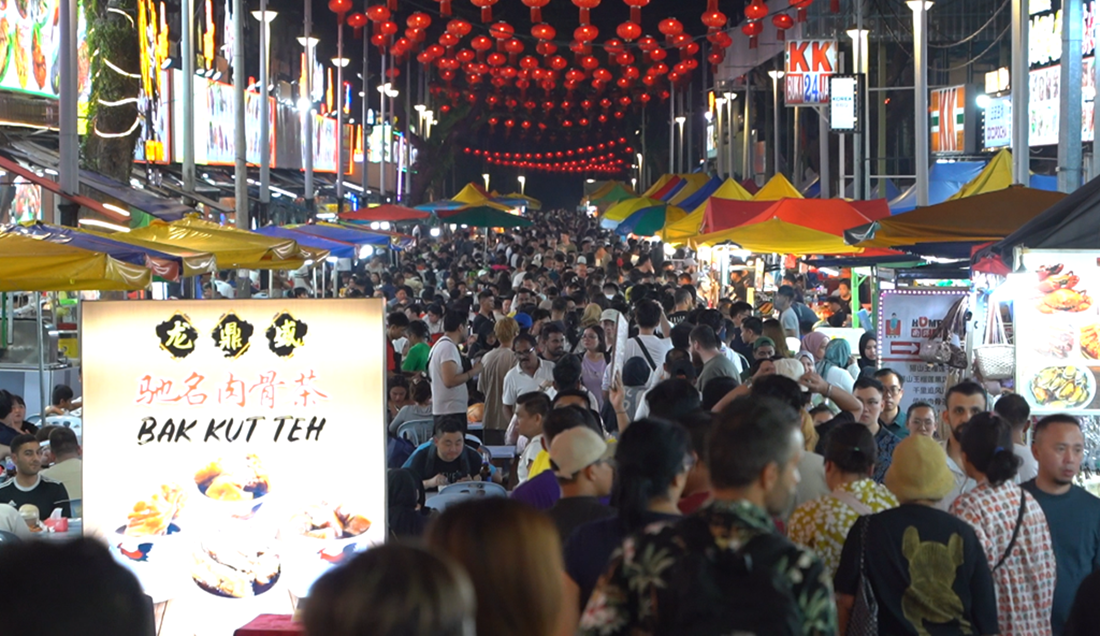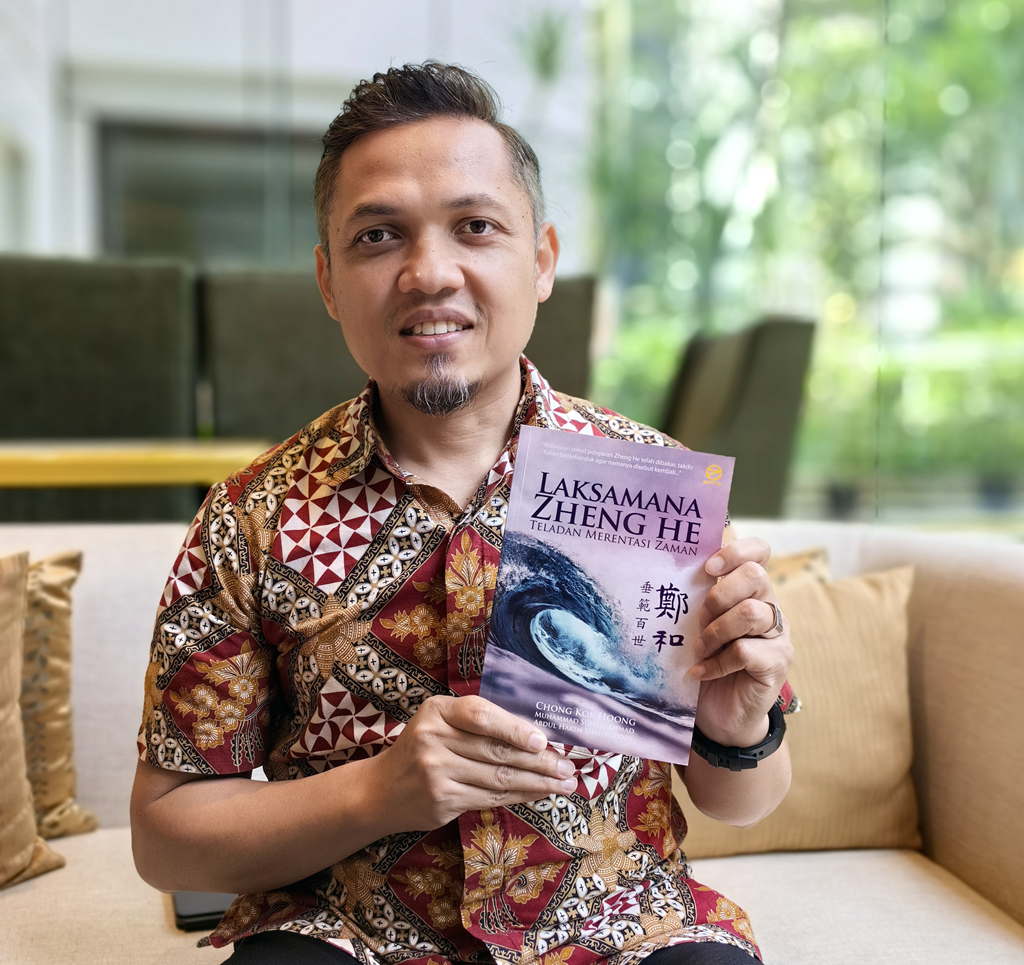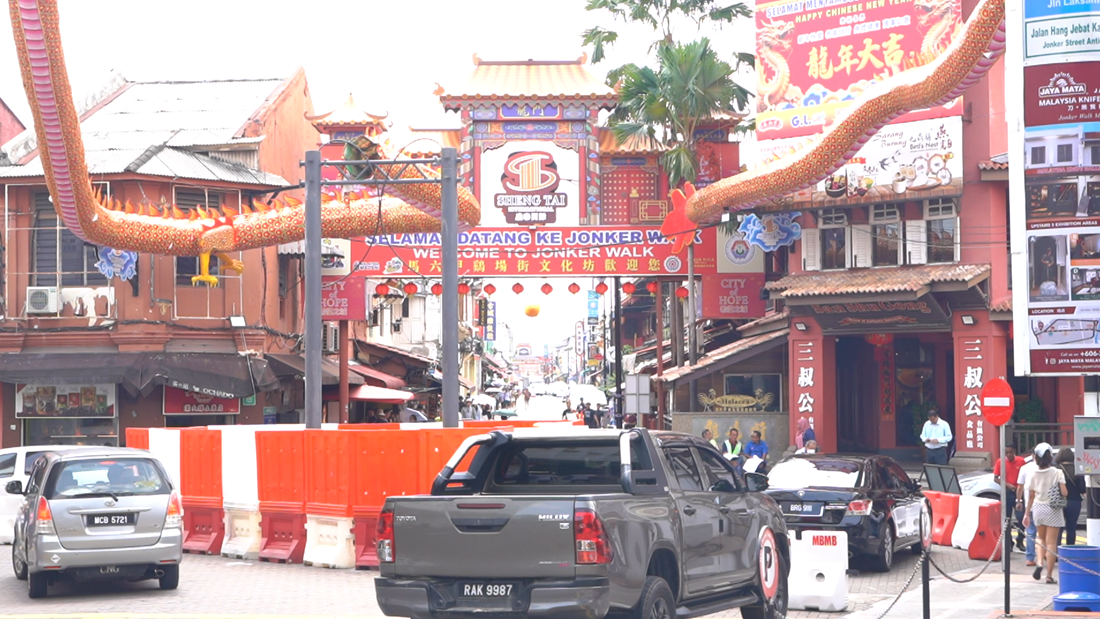Following the footsteps of Zheng He: A cultural journey
The Strait of Malacca is esteemed as “the busiest strait in the world”. More than six hundred years ago, the Chinese navigator Zheng He traversed this route multiple times along the Maritime Silk Road, sowing the seeds of peace and friendship. His legacy transcends time, fostering cultural exchanges between his hometown in Yunnan and Malaysia. Now, we will follow in Zheng He’s footsteps, beginning from his hometown in Yunnan and crossing mountains and seas to our first destinations: Malacca, Kuala Lumpur, and the primary production area of Musang King durians in Raub. Through this journey, you will feel the humid sea breeze and experience the enduring influence of Zheng He and the limitless power of his spirit.

Exploring Zheng He’s hometown
Zheng He (1371-1433), originally named Ma He and known by the nickname Sanbao, was born in Hedai Village, Baoshan Township, Kunyang County (now part of Kunyang Subdistrict in Jinning District, Kunming City, Yunnan Province). In 1404, due to his outstanding achievements in military campaigns, Zhu Di, the Chengzu Emperor of the Ming Dynasty, granted him the surname Zheng through an imperial decree. Between 1405 and 1433, Zheng He, who enjoyed the Emperor’s utmost trust, embarked on seven voyages to the West, achieving remarkable milestones in human history.
Traces of Zheng He’s influence can be found throughout his hometown, Jinning District. On the western slope of Yueshan Mountain by Dianchi Lake in Kunming, you can visit Zheng He Park, which was established in 1978. Six hundred years ago, this location was the largest fishing area and cargo terminal along the southwestern shore of Dianchi Lake. Today, the wharf where ships once docked has evolved into a modern town, while the expansive wetland nearby has become a popular destination for leisure and relaxation.
As you ascend the western slope of Yueshan Mountain, you’ll notice that the residences of Hedai Village have been relocated to accommodate Zheng He Park. Upon entering the park, you will find a striking 5.55-meter-high statue of Zheng He standing on a three-meter-high pedestal shaped like the bow of a ship. With his head held high and a valiant expression, Zheng He exudes a sense of strength and purpose. In his left hand, he grasps the hilt of a sword, while his right hand holds a nautical chart, presenting a weathered yet impressive visage that captures his adventurous spirit.
Every year on July 11, Jinning District hosts the Zheng He Culture and Tourism Festival, where people sing and dance to celebrate his remarkable story. Within Zheng He Park, attractions like the Memorial Hall, his former residence, Sanbao Tower, and the tomb of his father, Ma Hazhi, narrate different facets of his life and legacy. In the downtown area, you'll discover Zhenghe Road, themed buses, a cultural plaza, and a pavilion dedicated to his honor. These various sites help weave the story of peaceful interaction into the hearts of the community through vibrant and diverse experiences.

Discovering Nyonya flavors
The Taste Atlas Cafe, situated on the edge of Green Lake in Kunming, features a Nyonya indigo-style storefront, retro colorful patterned wall tiles, tropical greenery murals, and decorative lacquered wooden boxes. Upon entering, one feels as though they have stepped into a charming Chinese restaurant reminiscent of Malacca or Penang, Malaysia.
Nyonya nine-layer cakes, Nyonya stewed chicken, Nyonya black barbecue pork, Malay fried kuey teow, curry laksa rice noodles, coconut milk rice, Hainanese chicken, bak kut teh/tea, and coconut-flavored orchid cakes... These authentic Malaysian delicacies are sure to excite diners’ palates. “Nyonya cuisine is a fusion of Chinese Cantonese and Fujian styles, along with Malaysian and Indian influences,” said Chiu Kwok Leung, a Malaysian Chinese and owner of Taste Atlas Cafe. In Malaysia, the descendants of Chinese immigrants who arrived after Zheng He’s voyages and intermarried with locals are known as Peranakan or Baba Nyonya, with ‘Baba’ referring to males and ‘Nyonya’ to females.”
Kunming’s food map now features a growing number of Southeast Asian restaurants. One such establishment is Shunxi Nanyang Restaurant, located on Shulin Street, owned by Shen Gongru. A decade ago, Shen left Kunming to study hotel and restaurant management at Universiti Teknologi Malaysia. “The mother of one of my Malaysian classmates is a Nyonya. Every time I visited her home, I enjoyed amazing meals. Eventually, I learned to cook from her mother,” Shen said.
“Kunming is the hometown of Zheng He, and the rich story behind Nyonya flavors draws many locals. The city is home to a significant number of Southeast Asian businessmen and international students who enjoy Nyonya cuisine for its Southeast Asian cooking style. In recent years, an increasing number of Kunming residents have traveled to Malaysia, where they have discovered and fallen in love with Malay cuisine, including Nyonya dishes,” Shen said.
Since 2020, the Malaysian Food Festival has been held in Kunming for four consecutive years, becoming an important platform for citizens to experience the unique flavors and culture of Southeast Asia. “Nyonya cuisine symbolizes the long-standing exchanges between China and Malaysia and exemplifies the mutual understanding and integration of different cultures,” said Ms. Li, a Kunming resident, during the Malaysian Food Festival in April, 2024.
The beauty of food extends beyond just pampering the palate. Nyonya flavors serve as a bridge between the people of China and Malaysia, allowing diners to experience the harmonious interplay and mutual respect between these two vibrant cultures through a delightful culinary feast.

Meeting Zheng He researchers
Born in Malacca, Suhail is the co-author of Laksamana Zheng He Teladan Merentasi Zaman and serves as the principal researcher for the Zheng He Legacy Group at the World Civilization Research Association. Our reporters interviewed this researcher in Kuala Lumpur in May, 2024.
Through two years of research and field visits, Suhail has thoroughly examined Zheng He’s maritime exploits. “Zheng He’s greatness lies in his continuous innovation and courage to explore new worlds,” he said. He further attributes much of Zheng He’s legacy to the deep understanding he gained of local cultures during his voyages, his ability to build friendships with the locals, and the prosperity and development he fostered in the regions he visited.
Suhail believes that Zheng He’s spirit of exploration is still relevant today. He is currently working on projects to encourage Malaysians to travel and study in China. “More and more Malaysians are taking tours of Yunnan, drawn to its therapeutic natural settings and lifestyle, and the TV series Meet Yourself has gained immense popularity. This year, I also plan to visit Dali,” said Sohail. In his view, TV dramas and literature have helped bridge understanding between the two countries, and field trips are essential for deepening this exchange. By experiencing Chinese culture and customs firsthand, he contends that Malaysians can more fully appreciate the charm of China.
2024 marked the 50th anniversary of diplomatic relations between China and Malaysia. At the forum celebrating this milestone in Kuala Lumpur, our reporters spoke with Sun Zhiguo, vice president of the China Zheng He Research Association. He remarked, “Zheng He symbolizes the initial step in the friendship between China and Malaysia and serves as a bridge for our economic and cultural exchanges today. By building on this historical connection, the two nations can work together to seize future opportunities and address challenges in areas such as tourism, education, science and technology, and infrastructure development.”
The mutual visa exemption between China and Malaysia acts like an invisible red thread, connecting the hearts of the two nations and allowing their people to visit one another freely, fostering vibrant people-to-people exchanges. Sun mentioned that the Zheng He Culture Tourism Festival, held in Kunming, Yunnan Province—the hometown of Zheng He—has become a significant platform for showcasing his maritime achievements and promoting his spirit, attracting numerous domestic and international tourists. Following in Zheng He’s footsteps, travelers can experience the lingering warmth of that glorious history in the historic streets of Malacca.

Wandering through Chinatown in Malacca
Malaysia’s Jonker Walk Melaka, known as Chinatown in Malacca, is a must-visit destination that was once the site of Zheng He’s goods yard for storing supplies. This vibrant area features a variety of Chinese and Malaysian restaurants, coffee shops, handicraft stores, and the Hokkien Huay Kuan. Amidst the bustling atmosphere, Buddhist temples, Hindu temples, mosques, and Christian churches coexist, showcasing a thriving tapestry of cultures and religions living in harmony.
Older residents of the area often joke that every weekend, 100 new faces appear on Jonker Walk Melaka, as traders and tourists from around the world flock to the street. The culinary offerings here are diverse, featuring a variety of Chinese dishes alongside Portuguese grilled fish, Malay coconut milk rice, and the popular Chinese brand Mixue Ice Cream & Tea, which has made its mark in Southeast Asia. Stretching for a few hundred meters, this lively street celebrates the rich cultures of various countries and embodies the enduring friendship between China and Malaysia, which has flourished for 600 years.
On the former site of Zheng He’s goods yard, the Zheng He Culture Center was established with funding from Malaysian and Singaporean overseas Chinese. This center is the largest Zheng He-themed museum outside of China. The museum’s manager, Lin Shifa, is a passionate history enthusiast. A native of Malacca, Lin became captivated by the stories of Zheng He that he encountered in his textbooks during his school days. His fascination began with the formidable Zheng He fleet, leading him to explore the structure of the ships, their functions, the lifestyle aboard, and the management of the fleet through extensive reading and engaging with numerous individuals.
The museum features model ships that are specially customized from China, with vivid portrayals of the crew and the local people’s lives. Lin finds the display of various tools for rice milling, fishing, rice threshing, and weaving particularly fascinating. These artifacts highlight the subtle influence of the fleet on the production and lifestyle in Malacca. “Zheng He’s impact on Malacca extended beyond the goods he brought, such as porcelain, tea, and medicine; it also included the introduction of advanced production techniques and the principles of equality and friendship,” Lin reflected while standing in the exhibition hall.
Since December 1, 2023, China has implemented a unilateral visa-free entry policy for Malaysia. In response, Malaysia has announced similar visa-free measures for Chinese citizens. As a result, free and semi-free travelers from China have become a new highlight in Malacca.
Xiao Wu, a Malaysian Chinese who transitioned from the media industry to tourism, is exploring opportunities in the sector with his partners. They are promoting personalized car rentals, customized tours, and tourist assistance services through platforms like Little Red Book (Xiaohongshu) and TikTok (Douyin). “It’s not enough to simply know the customs and attractions of Malaysia; we also need to find ways to differentiate and enhance our services. We frequently receive requests for study tours, factory visits, and exploratory trips. In Malacca alone, we arrange coaches for tourists multiple times a month,” Xiao Wu said, smiling despite his busy schedule.
Fulfilling the love for Musang King durians
Malaysia is acknowledged as one of the original home of durians, boasting the world’s richest variety of this tropical fruit and a long history of cultivation. Over 600 years ago, when Zheng He ventured westward, he encountered this fruit characterized by its “spiky skin and sweet, delicious taste.” His adjutant referred to it as “du-er-yan.” Subsequently, the Malaysian Chinese named it “liu-lian,” which translates to “linger on with no thought of leaving.”
In Raub, the primary production area for Musang King durians, our reporters spoke with Liew Chun Sing, a third-generation Chinese durian expert from OVD Agricultural Land Development Sdn Bhd. “I grew up in a durian garden. For me, taking care of durian trees is like nurturing my own children,” he said. He expresses great excitement every year during the harvest season in June and July, as he feels not only the rewards of his labor but also the continuation of the self-improvement spirit of overseas Chinese.
Lim, who manages agriculture at OVD, is intimately familiar with the local durian cultivation in Raub. He explains that Malaysia is home to hundreds of durian varieties, each boasting its own distinctive taste and flavor. “As tourism between China and Malaysia continues to grow, many Chinese visitors come to Raub to experience the natural beauty of the tropics while indulging their love for durians,” he said with a smile.
According to Angie, an executive at OVD, the company is currently focused on cultivating Musang King durians and developing eco-tourism around its durian plantations. This initiative aims to help more tourists discover, understand, and taste the authentic Musang King durians. In recent years, the immense potential of the Chinese market, along with consumers’ passion for durians, has given Angie a strong sense of confidence.
There are countless stories about Zheng He in both China and Malaysia. Recently, 3,900 durian seedlings of Malaysian varieties were introduced for trial planting at the durian estate in Zheha Village, Mengding Town, Gengma Dai and Wa Autonomous County, Lincang City, Yunnan Province. These include 700 Musang King durian seedlings. The planting of these durian seedlings in Yunnan continues the legacy of “du-er-yan” from Zheng He’s era and serves as a testament to the modern “love of Musang King durian” shared by the Chinese and Malaysian peoples.
Text by our staff correspondents
Translated by YNTA